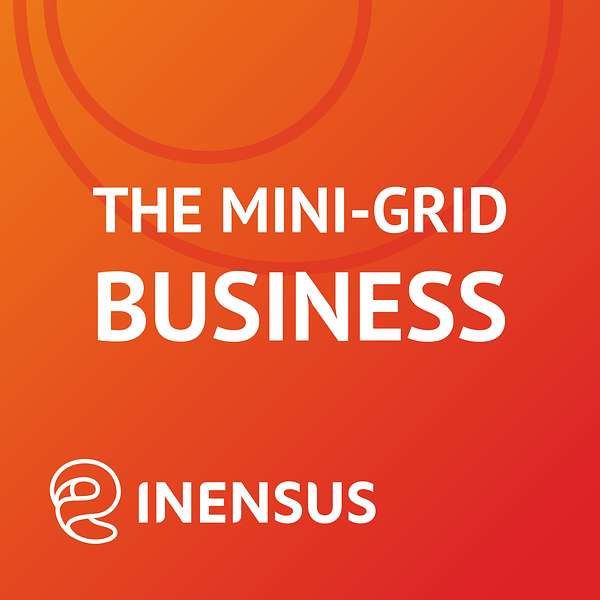
The Mini-Grid Business
Welcome to "The Mini-Grid Business," hosted by Nico Peterschmidt, CEO of the consultancy company INENSUS. With nearly two decades of experience working with over 100 mini-grid companies across Africa and Asia, INENSUS created a podcast, which becomes your gateway to the world of rural electrification through mini-grids.
In each episode, Nico and his guests – seasoned experts who have navigated the complexities of the mini-grid sector – offer candid insights based on real-life experiences. Whether they're individuals who have overcome significant challenges, policy makers shaping the sector’s frameworks and funding structures, or visionaries crafting the future of mini-grids, they all have unique perspectives to share.
From exploring successful pathways to profitability, to dissecting the reasons behind a company's struggles, "The Mini-Grid Business" delves deep into both theory and practice. It questions the accepted status quo of the mini-grid sector, aiming to unearth new perspectives or expose misunderstandings that need addressing.
This is a space for thought-provoking discussions, innovative ideas, and invaluable knowledge exchange.
Whether you are an industry veteran, a newcomer, or simply curious about the transformative potential of mini-grids, this podcast invites you to challenge your thinking, learn from others, and engage with a community that’s shaping a brighter, more sustainable future.
So, tune in, and enjoy "The Mini-Grid Business"!
LinkedIn: https://www.linkedin.com/company/inensus-gmbh/mycompany/
Twitter: INENSUS (@INENSUSgmbh) / X (twitter.com)
Visit www.inensus.com for more info.
The Mini-Grid Business
Containers vs. pre-fab vs. constructed power houses
What's the best way to house a mini-grid system in remote areas? Should developers opt for the plug-and-play convenience of containerized solutions, the flexible modularity of prefabricated structures, or the permanence of traditional powerhouses? This question lies at the heart of scaling sustainable energy access to millions without electricity.
Recorded live at the Energy Access Investment Forum 2025 in Kampala, this episode brings together Julie Roberts from SustainSolar and Abishek Bharadwaj from Equatorial Power for an illuminating debate on mini-grid infrastructure. Julie champions containerized systems where all components are pre-integrated and tested before shipment, reducing on-site technical risks. Abhishek advocates for prefabricated panels that can be transported individually and assembled like "Lego blocks," offering unprecedented flexibility for expansion or relocation.
The conversation reveals how terrain accessibility fundamentally shapes solution viability. While containers provide turnkey reliability, they require good roads and heavy equipment for installation. Prefab solutions excel in difficult terrains where panels can be hand-carried, while traditional construction, though permanent, introduces quality control challenges and extended timelines.
Cost considerations extend beyond initial investment to long-term operational impacts. Both guests share fascinating real-world examples—from relocating entire mini-grid systems within days using prefab structures to designing container interiors like "Tetris puzzles" to maximize space efficiency. The discussion extends to critical factors like weather resistance, thermal management, and community engagement across different approaches.
LinkedIn: https://www.linkedin.com/company/inensus-gmbh/mycompany/
Visit www.inensus.com for more info.
